Prunus caroliniana
(Cherry Laurel)
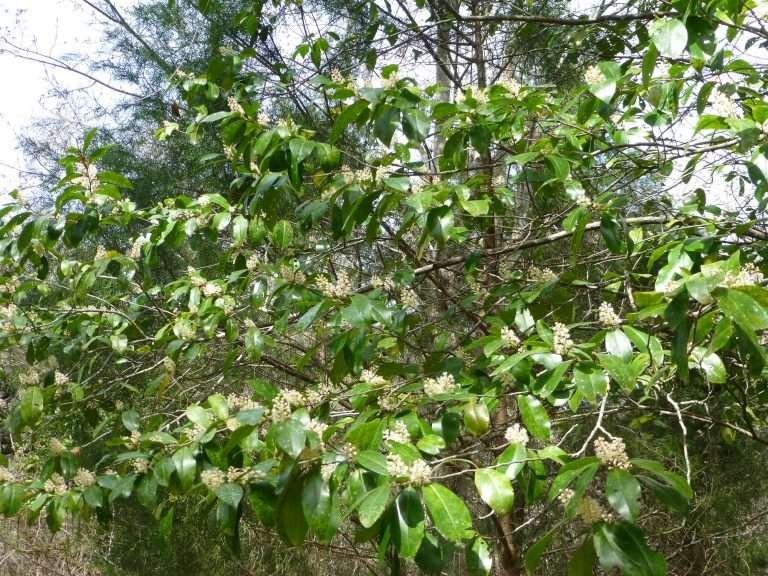
Common Name, Latin Name and Family
Its common names include cherry laurel, Carolina laurelcherry, and American cherry laurel.
The Latin name is Prunus caroliniana
It is found in the Rosaceae, rose, family.
Form
Cherry laurel is a native, evergreen, tree that grows to 35 feet in height.
Leaves
Cherry laurel leaves are evergreen, alternate and simple with a leathery texture.
Leaf margins generally have small teeth, however some may not.
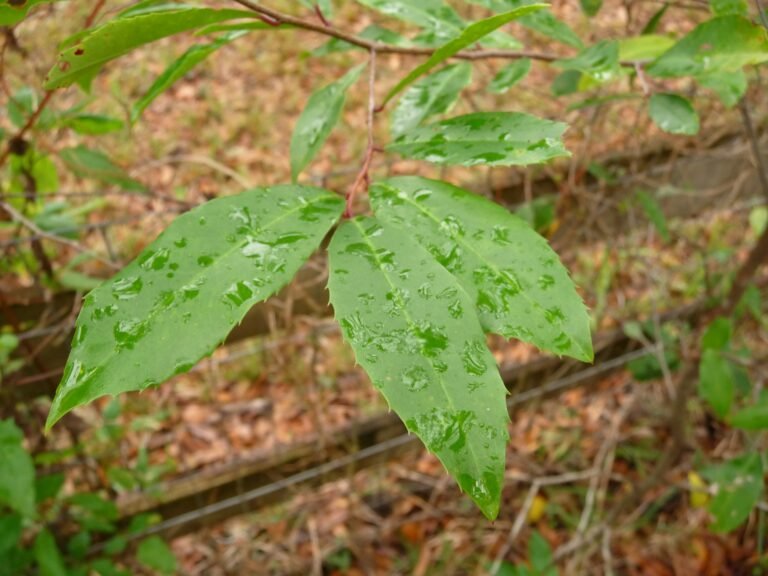
Flowers
Cherry laurel flowers are white, fragrant, flowers and born on racemes.
Blooms appear in late winter and early spring.
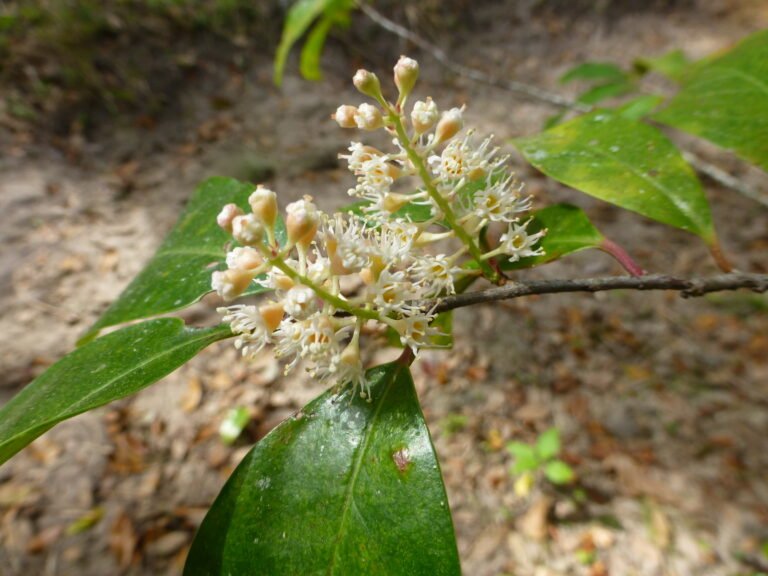
Fruit
A shiny, black purple drupe containing one large pit / seed.
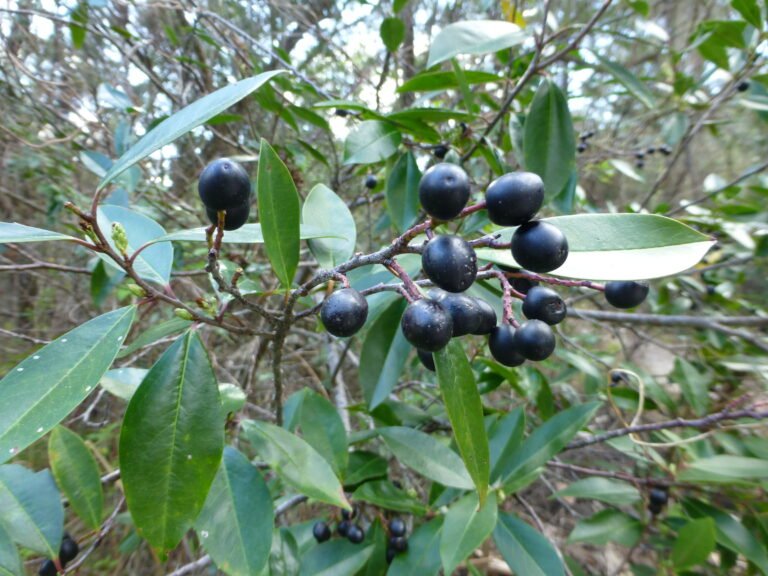
Habitat
Open hammocks, disturbed sites, and fence rows where birds deposit seeds.
Native Range
In Florida it is found naturally occuring from north Florida south to about Martin County.
It is native to the southeastern United States from North Carolina to Florida west to Arkansas, Louisiana and Texas.
It is native to Alabama, Arkansas, Florida, Georgia, Louisiana, Mississippi, North Carolina, South Carolina and Texas.
It grows in zones 7a to 10b.
Landscape Use
It grows in full sun to part shade with average to moist soils.
At 35 feet at maturity it can be grown as an upper canopy tree or an under canopy tree.
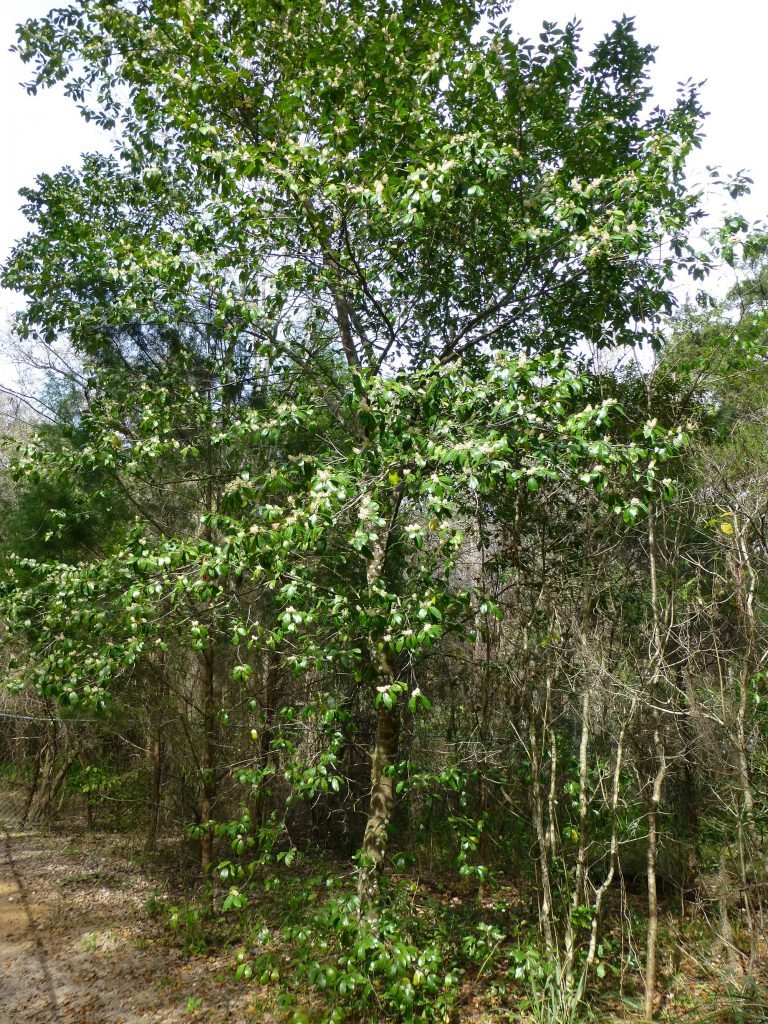
Wildlife Use
Bees and butterflies use cherry laurel flowers as a nectar source.
Songbirds and mammals eat the dark purple fruit.
Propagation
Cherry laurel grows easily from seed, but can also be transplanted at any size.
Usually there are seedlings underneath mature trees and those can be transplanted, or potted, very easily.
Larger saplings can also be transplanted if the flowers and fruit are removed to allow it to recover from the shock. Keep it well watered until new growth appears.

